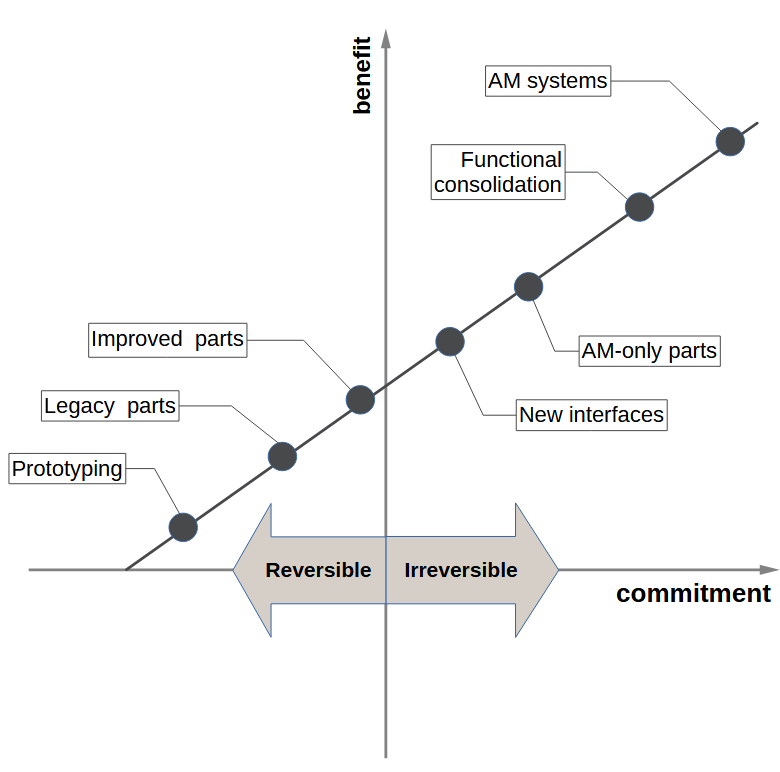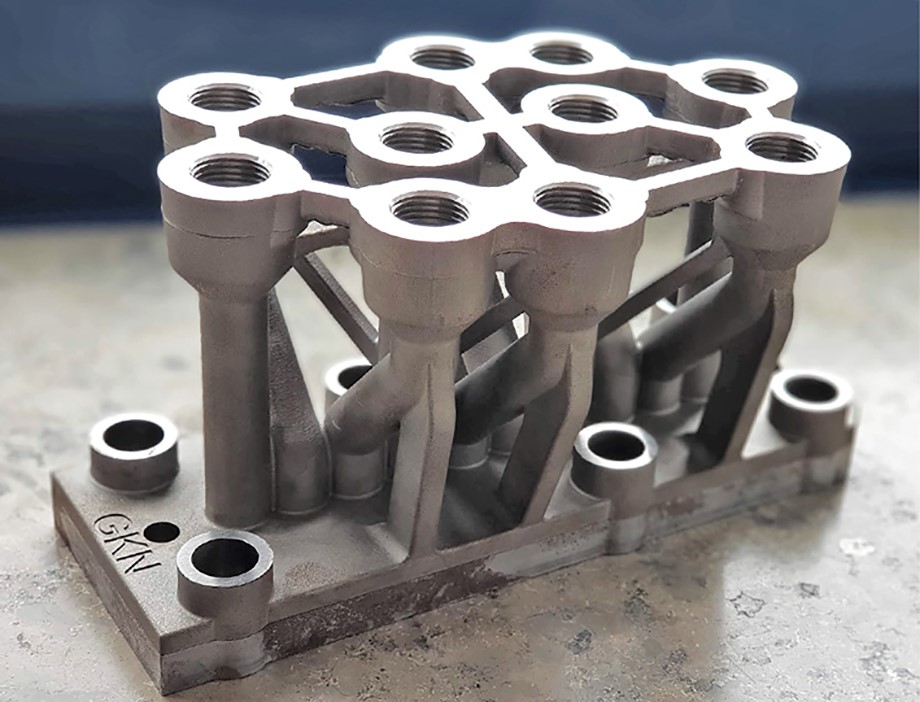How much commitment does AM need?
1. Introduction
As a company is deciding whether to implement AM for parts and assemblies, the question of risk is intrinsic to the decisions they will take. The product requirements you receive as a designer will reflect the company’s attitude to risk and it is worth having the big picture in mind for your discussions with your internal or external customers.
1.1.Make prototypes
The easiest and safest way to try using AM is to make prototypes. Here the risk is essentially zero and the benefit is speeding up the design process, by rapidly iterating through design solutions, using physical prototypes to test form, fit and even function.
The next step would be to use AM for a functional part. A common example of this is the use of AM for jigs and fixtures. The jigs and fixtures can be tailored to individual operators or parts and can be low cost. If they have a short working life or don’t work perfectly, then there is little loss. In this case as a designer you have full freedom to do DfAM from first principles, exploring the freedom of AM and design almost by trial and error to reach a solution that works.
1.2.Use AM to make existing parts
A company that is willing to increase their risk can try using AM for end-use parts. Here, things are more serious because material properties matter, product life is important and there may be certification or other regulatory considerations. A company could approach this incrementally, first by substituting an existing part they make with one made by AM. They will need to achieve the same fit and function and there will be restrictions on form. The part will have to fit into the same volume the original part occupied. It will most likely be made of the same material (or an AM equivalent) as the original part. Here, design may well be a case of modifying the existing design to make it manufacturable by AM, i.e. a DfM exercise, without thinking about design freedoms. Some people refer to this as Modification for Manufacture (MfM) i.e. it’s a precursor to doing full DfAM. The commitment by the company in this instance is “reversible” in the sense that, if the AM part doesn’t work or the production quality is poor or there are supply chain issues etc, then the company can easily switch back to using the original part.
1.3.Improve parts
Another example is fluidic manifolds, such as the one shown below. In this case, as a designer you can use AM for the benefit reducing material mass and material waste (if machining) to make an AM version of the manifold, while respecting the interface points of the manifold in the overall system. This way, the original manifold can be used if needed. This is reversible commitment.
1.4. Change the interfaces
The next step may be to make the manifold smaller and even lighter by optimising the paths the fluid flows along. The new manifold will have different interface points, meaning that the connectin g pipework will change. This is ‘irreversible’ commitment in the sense that the original cant just be switched back in.
An AM manifold block that maintains the same interface points as the conventional one (GKN )
1.5.Design AM-only parts
Companies with sufficient confidence in AM can take the step of developing a new part that can only be made use AM. An example of this would be the stealth key as shown in the image below. It has the key teeth on the internal face of the key. It has been designed taking full advantage of AM ‘design freedoms’. Here the risk is that somewhere along the process chain a problem emerges (for example supply chain issues, quality control, verification testing etc). In this case, the company would lose the product due to their dependance on AM as the manufacturing route.

A key that is only practically manufacturable using AM (Urban Alps )
1.6.Build systems containing AM parts
A step beyond this is to create mechanical or other systems that rely on one or more AM parts. Here the interaction of parts in the system, their material properties, mass, packing space are all entangled. A good example is the AM brake caliper used by Bugatti. Replacing the caliper with a conventional one that needs a larger volume or is heaver, will mean that interface points will move, other parts will have to be redesigned and this will impact the dynamic behaviour of the whole wheel assembly.

An AM brake caliper (Bugatti)
1.7.Functional consolidation of parts
And finally, the ultimate expression of commitment to AM is to design components that combine the functionality of many parts into one. For example take a rocket nozzle that has internal cooling channels integrated into the nozzle. It has dual function ( exhaust jet forming and cooling). Here the functions and forms are intrinsically bound together and you are fully commited to AM. As a DfAM designer this may be the most fulfilling type of design you will be asked to do!

RAMFIRE Aerospike nozzle (NASA)
The image below represents this concept graphically

Commitment to, and Benefit from, AM (MakeAmaze)


